It’s A Mod, Mod Home
Lisa Perry’s beach house hews to the same ’60s-happy logic as her new line of tunics, swing dresses and circular handbags: saturated colors, geometric shapes and relentless optimism.
The child of textile professionals in Chicago, Perry was raised on a cheery mix of Marimekko fabrics, shag carpets and Saarinen swan chairs. Is it any wonder she grew up to be New York’s maven of mod? Her eponymous fashion collection draws vivid inspiration from her closet of ’60s and ’70s greatest hits: Courrèges, Cardin, Pucci. And her obsession with those free-love decades influences her decorating as much as it does her dress code. The converted former monastery in North Haven, NY, that she shares with her family is all minimalist lines and electric hues; like her designs, it pays homage to her enviable trove of modern art, as well as to the Marimekko patterns that are part of her DNA. But the place wasn’t always so upbeat. Enlisting the help of the 1100 Architect form and interior designers Tony Ingrao and Alexia Kondylis, Perry set out to modify the original brick facade and British Colonial interior, Oak-Paneled rooms were painted white and the floors ebonized three times over, providing gallery-esque conditions for the Pop Art-y decor. Moving through the rooms in her mini shifts and Lucite wedge heels, Perry truly seems part of the house.
Primary Kitchen
The it came time to choose a color for the custom kitchen cabinetry, Perry knew she wanted to allude to water and sky – epics view of both can be had all over the house. But how to find the perfect blue? Look to a beloved Marimekko pillow! (She selected the darkest shade on the throw pillows in the den) to get the saturated effect she craved, woodworker Steve Donadic used layers of royal-blue paint, sealed with lacquer gloss. Kartell stools pull up to counters made of Silestone (Perry likes that it comes in large, seamless slabs) for casual dining. The orbs of a Flos chandelier offset the predominance of rectangles in the room, as do the iconic apple and lemon, felt artwork that Perry made herself to reference the Marimekko dishes.
Brightened Nature
The house’s previous owners had left a long farmhouse trestle table in the dining room, which Perry found too old-fashioned – a Laura Ashley to her Courrèges, so to speak. Then she realized that a coat of white paint could transform the wooden piece entirely. She dragged the newly blanched table out to her patio and paired it with Bertoia chairs. “We love to have our friends for big lunches or BBQs on the weekend,” Perry says. No doubt, the guests appreciate the happy-go-lucky decorations – red-and-white melamine plates with multicolored napkins and a mixed-up parade of patterned pillows – as much as they do the view of the Noyac and Peconic bays.
Geometry
Perry’s living room is as guided by shape as it is by shade. In fact, as much as brights make her day she largely restricts color to art and accessories, so as to punctuate spaces but overwhelm them. Here, two massive white sectional sofas custom-designed by Tony Ingrao hold court, providing architecture within the architecture and offering ample comfortable seating for the fundraisers Perry and her husband, Richard, like to host. A long rectangular console table at the sofa’s edge is convenient for buffet suppers. The round Karl Springer table (it morphs from coffee to dinner table by remote control) and eggy stools evoke the circles in the works by Alexander Libreman, while Italian chairs from the ’70s – leather cylinders encased between slabs of glass – suggest exquisite centipedes. Splashes of yellow and green perk up the room as do small “Love” pillows, which are an uplifting motif throughout the house.
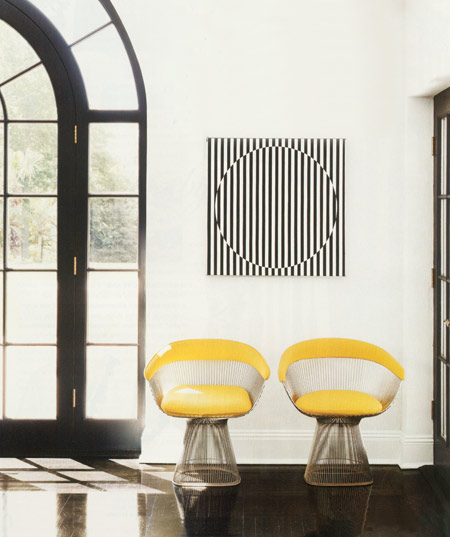
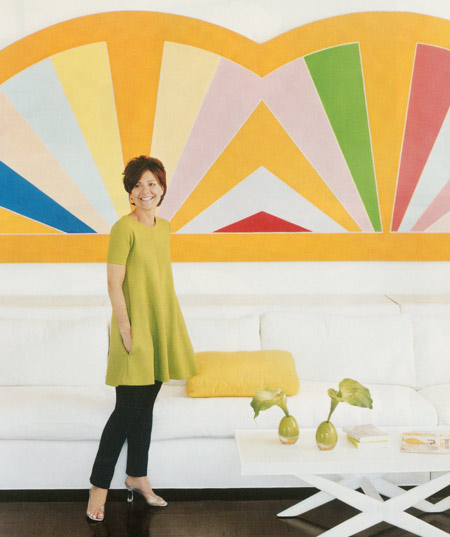
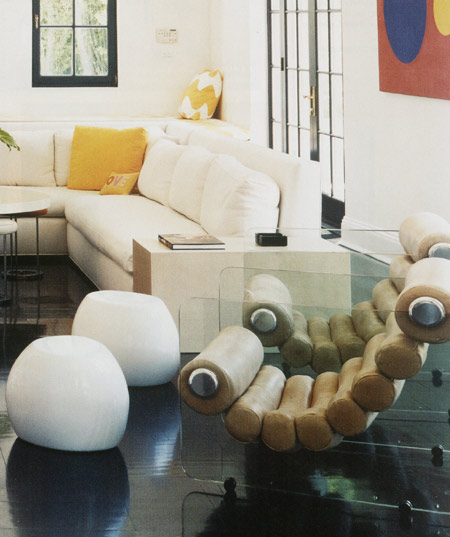
Sophisticated Rec Rooms
Perry didn’t want the house’s grand scale to preclude coziness. “I felt strongly that there be a number of conversation pits where you could sit with a wet bathing suit on,” she says. In the den, the vibe is laid-back, with low-slung sofas, wicker chairs and a decidedly mellow earth-tone scheme. On the floor, a rug that looks like sea grass is made of wool, rather than sisal, because it’s so much softer. The traditional French limestone hearth had to go! In its place is a much groovier curved fireplace. The area connects to the dining room, where the palette is stark in comparison to the rest of the house. But an installation of 14 George Nelson light fixtures, all controlled by a single dimmer, keeps the geometric drama.
Color-coded Sleep
“I wanted each bedroom to feel unique,” Perry says. The solution? Design each around a single, primary hue – not unlike the knit dresses that compromise her fashion line. The green room, with its giant stuffed animals, is a contempo-safari that delights little visitors. The yellow room, whose lofty beams Perry painted her trademark white, is more soothing. To emphasize the room’s soaring ceiling, all furniture, from the Capellini bed to the custom resin-topped bench at its foot, hovers just above the ground. “The lower something is, the more modern it feels.” Perry says. (The blue bedroom is not pictured.)
Tell us everything!
Why a mod fashion line?
I went to the Fashion Institute of Technology and studied textile technology. But I always wore ’60s and ’70s vintage, and people would ask where i got this or that. I figured people are still drawn to this style, and that I could make it findable and wearable for everyone.
Your favorite vintage piece?
I have Courrèges patent-leather jackets in every shade, and now I’m doing my own version in lilac, black and white.
Is it always about color?
I’m also a big fan of the graphic combination of black and white. I adore the white sunglasses – I wear them on top of my head. Very mod! Like Audrey Hepburn in How to Steal a Million.
Her collection
I’m drawn to comfort and color. I model my dresses on the vintage designs in my wardrobe and try to use every color of the spectrum. But I offer people a black and white story too. And I always wear my pieces and Lucite heels.
Her inspiration
I love candy. I think it’s fun to color-coordinate bowls of M&Ms for the rooms in my house. I have long been an admirer of French artist Niki de Saint Phalie. Her use of primary colors and geometric shapes ties in to what I do, and her feminism and celebration of women of all sizes really appeals to me.
Photographs by Douglas Friedman
Text by Amy Laroccan
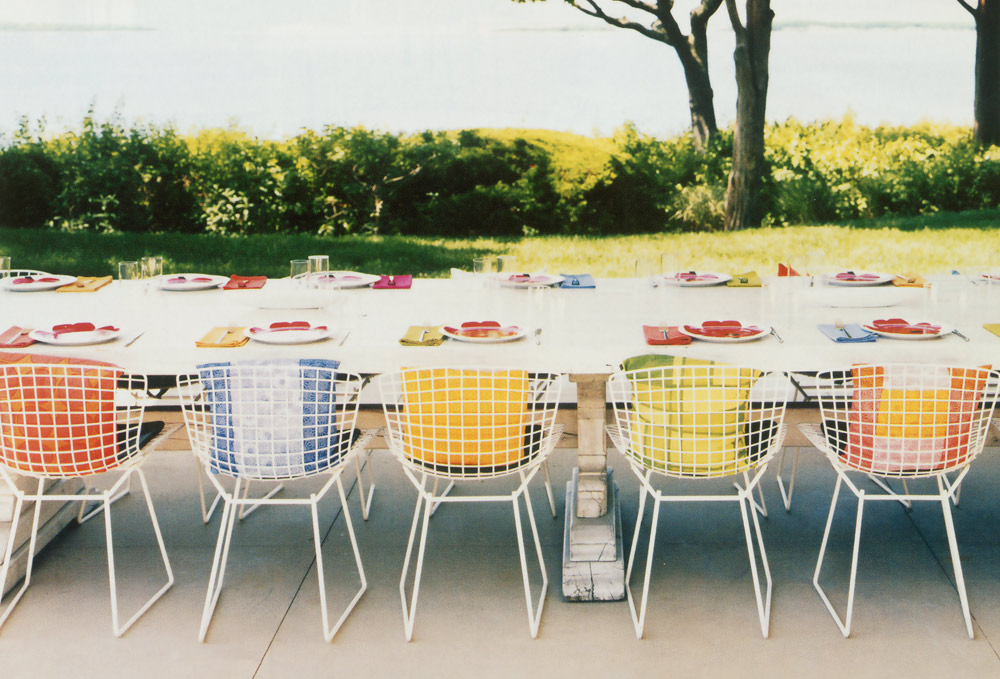
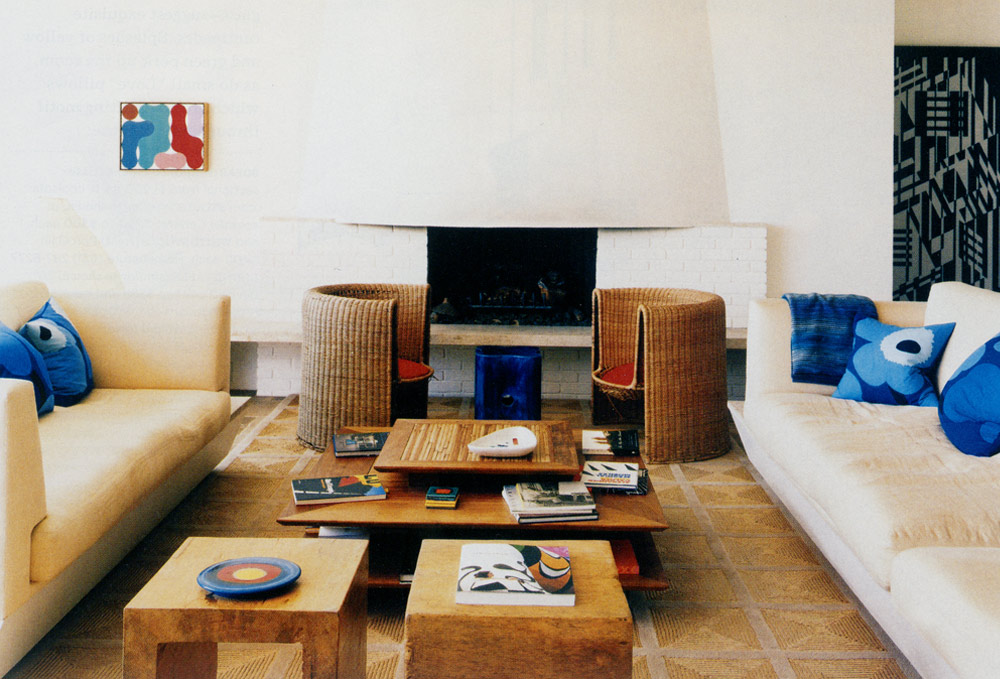

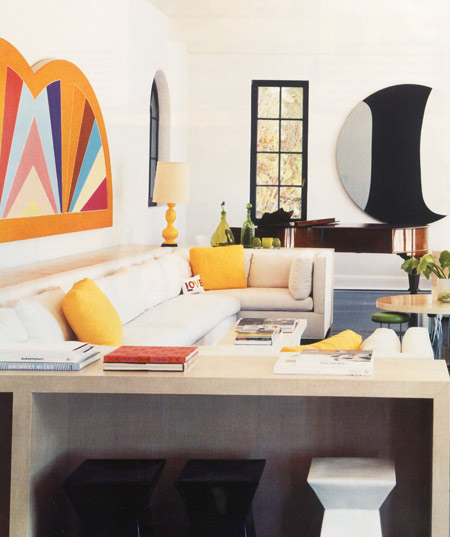
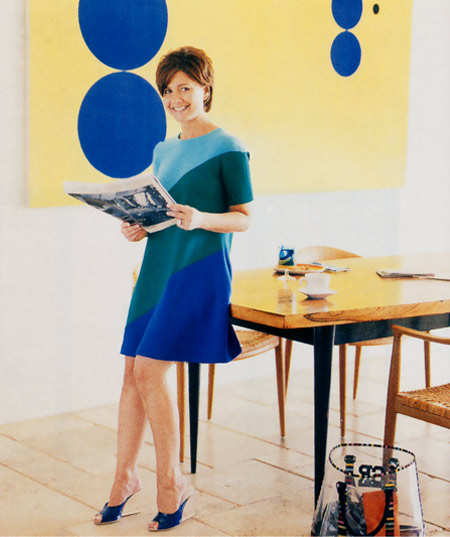
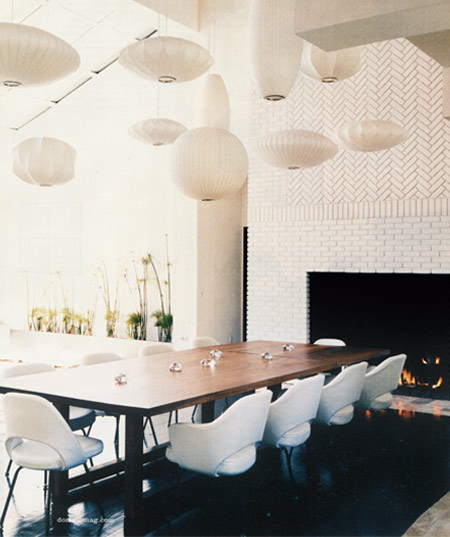
Back to Press
